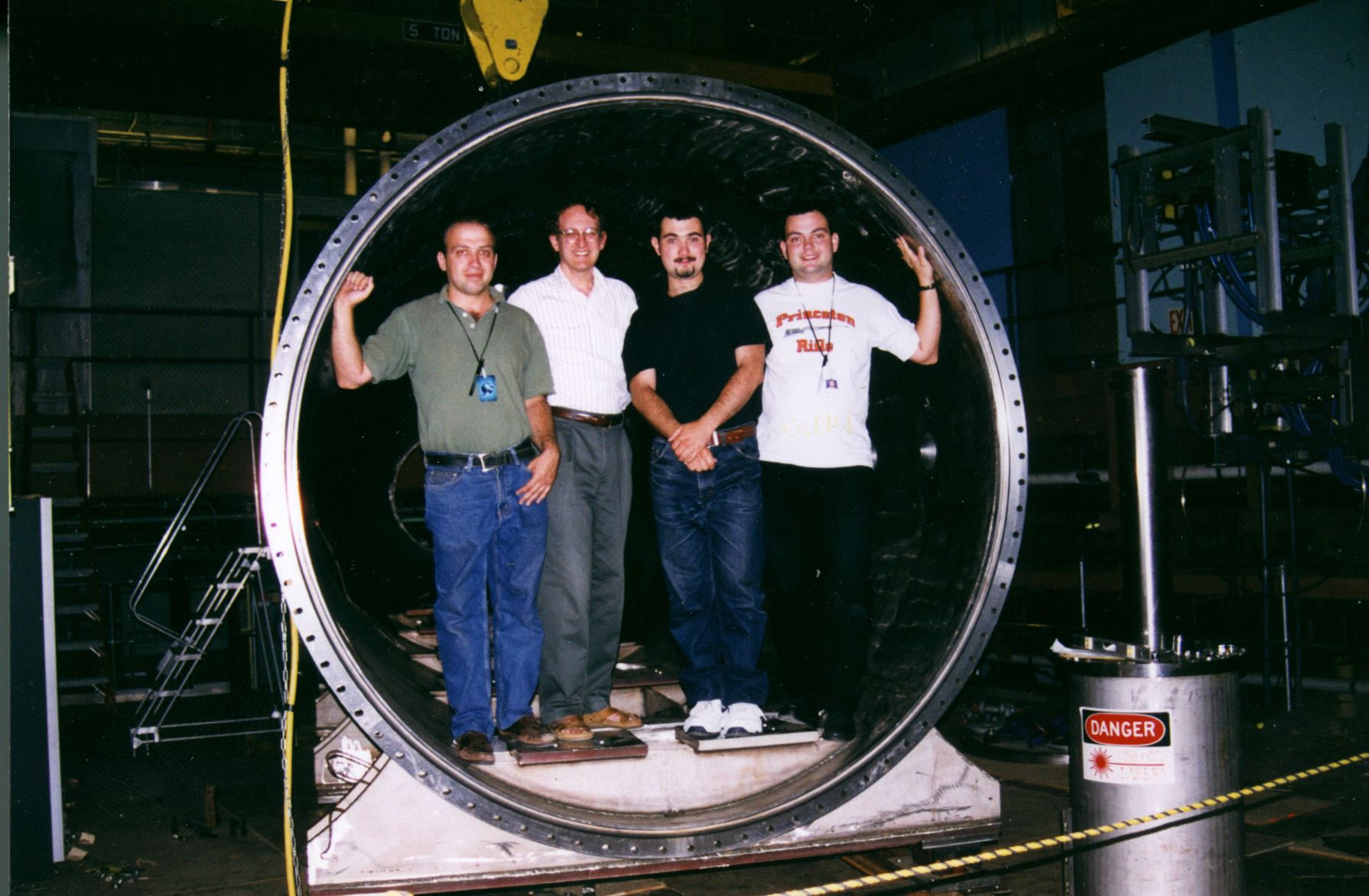
The Hall Thruster is a plasma-based propulsion system for space vehicles
that was invented in the late 1950s. It has been developed primarily by
the Russians. During the past 20 years, the Russians placed in orbit about
100 Hall Thrusters. However, the vast majority of satellites worldwide
have relied on chemical thrusters and, to a lesser extent, ion thrusters.
A conventional ion thruster consists of two grids, an anode and a cathode,
between which a voltage drop occurs. Positively charged ions accelerate
away from the anode toward the cathode grid and through it. After
the ions get past the cathode, electrons are added to the flow, neutralizing
the output to keep it moving. A thrust is exerted on the anode-cathode
system, in a direction opposite to that of the flow. Unfortunately,
a positive charge builds up in the space between the grids, limiting the
ion flow and, therefore, the magnitude of the thrust that can be attained.
In a Hall Thruster, electrons injected into a radial magnetic field neutralize
the space charge. The magnitude of the field is approximately 200 gauss,
strong enough to trap the electrons by causing them to spiral around the
field lines. Together, the magnetic field and a trapped electron cloud
serve as a virtual cathode. The ions, too heavy to be affected by the field,
continue their journey through the virtual cathode. The movement of the
positive and negative electrical charges through the system results in
a net force on the thruster in a direction opposite that of the ion flow.
Generally, thrusters are used to compensate for atmospheric drag on satellites
in low-earth orbit, to reposition satellites in geosynchronous orbit, or
to raise a satellite from a lower orbit to geosynchronous orbit.
As a basic rule of thumb, for each kilogram of satellite mass one or two
watts of on-board power are available. PPPL's Hall Thruster consumes several
hundred watts of power, making it suitable for a satellite with a mass
in the range of a few hundred kilograms. PPPL physicists believe there
may be a market for Hall Thrusters operating at 1,000 watts or more, but
say predictions are difficult to make. They also speculate about the development
of Hall microthrusters with power outputs in the 100-watt range, useful
for very small satellites with masses of 50 to 100 kilograms. One
could envision a large satellite disbursing hundreds of the smaller ones
for the exploration of a planet or as a spaced-based radar array. The Hall
Thruster may be too power hungry for this application, but answers to these
and other questions may emerge from research now underway at PPPL.
Plasma thrusters for current space applications employ xenon propellant.
Xenon is relatively easy to ionize and store onboard the spacecraft. It
also has a high atomic number (54), which means a lot of mass per ionization
energy expended. The ionization energy is an
unavoidable
inefficiency; in the range of exhaust velocities most useful for current
space applications - about 15 km/sec - this energy loss for once-ionized
xenon is less than 10 percent of the exhaust energy. (If the weight per
atom were half, this percentage would double.)
Initial results indicate that PPPL's Hall Thruster operating at 900 watts
does so with an efficiency that is comparable to state-of-the-art thrusters.
Planned upgrades include segmenting the thruster. Each segment would be
held at a specific electric potential, enabling researchers to control
exactly where the voltage drop occurs along the length of the thruster.
PPPL's Hall Thruster was designed with a modular configuration so as to
allow multiple thruster geometries that could be diagnosed in detail easily.
This includes the ability to measure precisely in three dimensions how
the thrust varies with position. This information could be used to arrive
at techniques to narrow the plume and obtain more control over the outflow
from the thruster, possibly improving its efficiency.
These capabilities may allow PPPL to advance the Hall Thrusters, making
them more attractive for commercial and military applications.
[Go
to Hall Thruster Home Page]
Back
to Top
|
